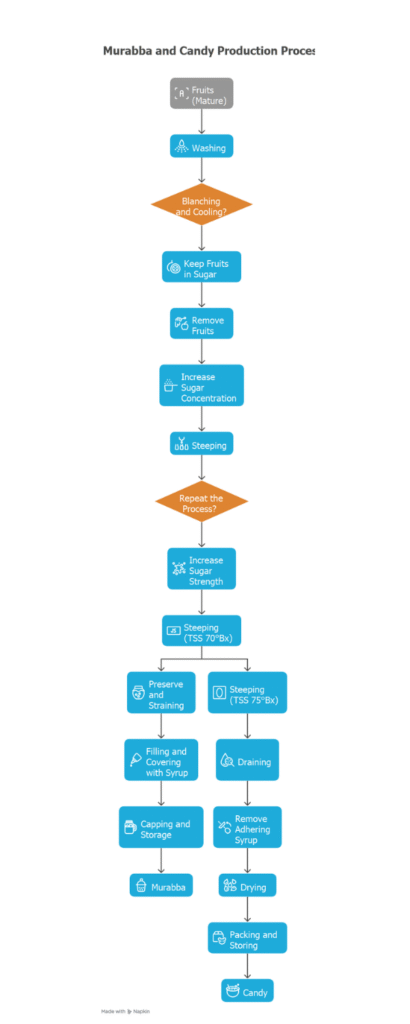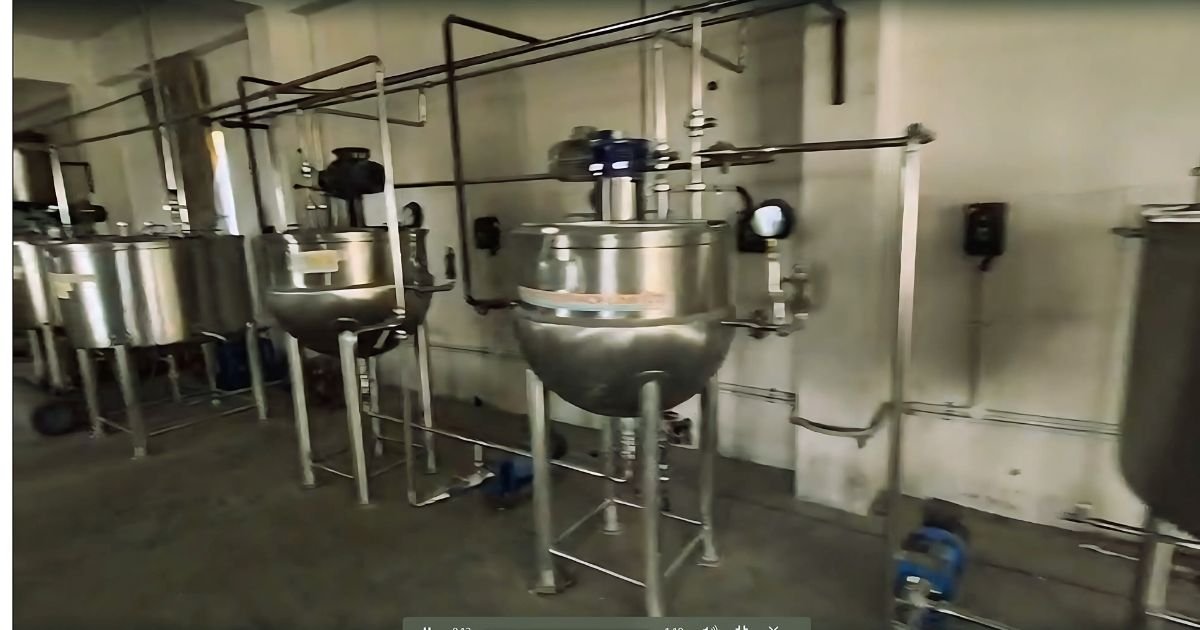The Indian food processing industry stands at the cusp of a significant revolution, driven by increasing demand for processed foods and the critical need to reduce post-harvest losses. Against this backdrop, an exceptional investment opportunity emerges in the serene and agriculturally rich landscapes of Himachal Pradesh. This “Food Processing Unit for sale” presents a meticulously planned and strategically located cold storage facility and a diversified fruit and vegetable processing unit, poised for substantial growth and robust returns.
This detailed overview provides potential investors and buyers with a comprehensive understanding of the project’s unique selling propositions, operational efficiencies, market potential, and compelling financial projections. Join us in exploring an investment that promises not just financial growth but also a pivotal role in strengthening India’s food supply chain.
🌾 Investment Opportunity: Food Processing Unit
Himachal Pradesh
Company Overview
Incorporated
1st March 2021
Industry
Cold Storage + Processing
Location
Sirmaur, Himachal Pradesh
Team
Experienced Leadership
Product Line
Fruit Pulps
Mango, Banana, Papaya, Apple…
Ketchup & Sauces
Tomato, Green Chilly
Pickles & Murabba
Mango, Garlic, Green Chilly…
Herbal Grinding
Amla, Giloy, Harad…
Infrastructure
Cold Storage
170 MT Capacity
Ripening Chambers
100 MT Capacity
Total Built Area
8000 sq. ft.
Refer Vehicles
3 (2 pickups + 1 truck)
Financial Highlights
Market Strength
India’s Food Market
6th largest globally
HP Raw Material Access
Apples, Vegetables, Herbs
Processing Penetration
State Agriculture Revenue
Annual revenue from vegetables in Himachal Pradesh
Food Processing Unit for Sale: Overview & Vision
The Food Processing Unit was incorporated on March 1, 2021, with a clear and ambitious mission: to establish a robust Cold Storage Facility and a state-of-the-art Processing Unit for Fruits and Vegetables. Their collective vision is to leverage Himachal Pradesh’s rich agricultural bounty and the growing demand for processed food products and efficient cold chain infrastructure in India.
Strategic Location Advantage: Heart of Himachal Pradesh
The unit is strategically located at Tehsil Dadahu, Distt. Sirmaur, Himachal Pradesh. This location offers distinct advantages, being free from civic restrictions and boasting sufficient availability of electricity and water—critical resources for industrial operations.
Himachal Pradesh is a verdant state, blessed with diverse agro-climatic conditions that support the cultivation of a wide array of horticultural commodities, including various fruit crops (from temperate to sub-tropical), flowers, vegetables, mushrooms, and medicinal plants. This ensures a consistent and abundant supply of raw materials for the processing unit. The state is the second-largest producer of apples in India , and vegetable farming is rapidly expanding, contributing significantly more revenue than fruits annually.
Discover the Location on Google Maps
(Note: The map location provided is for “Nahar Patwar, Himachal Pradesh,” as specified in the document. An exact pin-point might require more precise coordinates.)
Comprehensive Products & Services
The Food Processing Unit is designed to operate a dual-function facility, offering essential cold storage services and a diversified range of processed fruit and vegetable products.
State-of-the-Art Cold Storage Facility
The cold storage facility boasts a significant capacity of 170 MT, complemented by an additional 100 MT dedicated to fruit ripening. Cold storage facilities are paramount infrastructure for perishable commodities in India , playing a crucial role in stabilizing market prices, distributing products efficiently on both demand and time bases, and reducing wastage.
This facility empowers farmers to cultivate cash crops with confidence, ensuring remunerative prices , while consumers benefit from a consistent supply of perishables with minimized price fluctuations.
Commonly Stored Commodities:
- Apples, potatoes, oranges (large scale)
- Dry fruits, chemicals, essences
- Processed foods like fruit juice/pulp, concentrates, dairy products
- Frozen meat, fish, and eggs
Cold Storage Process:
- Sorting & Selection: Fruits and vegetables are meticulously sorted, with damaged ones removed.
- Packaging: Sorted produce is packed, preferably in wooden or plastic carton boxes.
- Storage & Maintenance: Packed materials are kept in cold storage chambers where temperature and humidity are precisely maintained according to the specific commodity’s requirements.
Commonly Stored Commodities:
- Apples, potatoes, oranges (large scale)
- Dry fruits, chemicals, essences
- Processed foods like fruit juice/pulp, concentrates, dairy products
- Frozen meat, fish, and eggs
Cold Storage Process:
- Sorting & Selection: Fruits and vegetables are meticulously sorted, with damaged ones removed.
- Packaging: Sorted produce is packed, preferably in wooden or plastic carton boxes.
- Storage & Maintenance: Packed materials are kept in cold storage chambers where temperature and humidity are precisely maintained according to the specific commodity’s requirements.
Optimal Storage Conditions for Fruits
| S.no. | Name of Fruit | Storage Temp °F | Life (in weeks) |
| 1 | Apple | 32-35 | 7-26 |
| 2 | Apricot | 30-32 | 2-4 |
| 3 | Berry Fruits | 30-32 | 2-3 |
| 4 | Bananas | 55-60 | 2-3 |
| 5 | Cherries | 30-32 | 2-3 |
| 6 | Guavas | 47-50 | 3-4 |
| 7 | Grapes | 30-32 | 4-6 |
| 8 | Lemon | 50-55 | 9-13 |
| 9 | Lime | 50-55 | 4-5 |
| 10 | Mangoes | 45-50 | 4-6 |
| 11 | Oranges | 36-39 | 13-17 |
| 12 | Pears | 30-32 | 2-4 |
| 13 | Peaches | 30-32 | 2-4 |
| 14 | Plums | 30-32 | 2-4 |
| 15 | Pineapple | 50-55 | 3-4 |
Optimal Storage Conditions for Vegetables
| S.no. | Name of Vegetable | Storage Temp °F | Life (in weeks) |
| 1 | Beans | 32-35 | 2-3 |
| 2 | Beet root | 32-35 | 6-8 |
| 3 | Brinjals | 47-50 | 3-4 |
| 4 | Carrots | 32-35 | 13-17 |
| 5 | Cauliflower | 34-35 | 4-6 |
| 6 | Cabbage | 32-35 | 9-13 |
| 7 | Onions | 32-35 | 17-26 |
| 8 | Potatoes | 37-38 | 26-35 |
| 9 | Radish | 32-35 | 6-8 |
| 10 | Turnips | 32-35 | 13-17 |
| 11 | Tomatoes Ripe | 40-45 | 1-2 |
| 12 | Tomatoes Mature | 55-60 | 3-4 |
| 13 | Peas | 32-35 | 2-3 |
Diversified Food Processing Unit
The unit is equipped to process a wide variety of fruits and vegetables into high-demand products:
- Pulp: From Strawberry, Litchi, Apple, Papaya, Banana, Mango, etc.
- Murabba: From Amla, Apple, etc.
- Ketchup: From Tomato, Green Chilly, etc.
- Pickle: From Mango, Garlic, Green Chilly, Cauliflower, Carrot, Radish, etc.
- Grinding: Amla, Harad, Bheda, Darul Haldi, Ginger, Giloy, etc.
Fruit Pulp Processing: A Step-by-Step Approach
The fruit pulp production line incorporates several critical steps to ensure high-quality output and extended shelf life:
- Raw Material Reception: Incoming raw materials are weighed and meticulously evaluated for quality.
- Sorting & Grading: Quality-checked products are sorted and graded based on size, color, dimension, and other physical parameters.
- Washing & Sanitization: Thorough washing and sanitization eliminate farm dust, foreign particles, and chemical/fertilizer residues, preventing contamination.
- Raw Material Maturation (Ripening): Unripe fruits are transferred to ripening chambers equipped with ethylene generators to facilitate the ripening process, maintaining optimal temperature and humidity while removing generated carbon dioxide.
- Pulp Processing:
- Peeling & Cutting: Fruits are peeled and chopped into smaller pieces for efficient destoning and crushing.
- Destoning: Seeds and pits are removed to prevent sour or off-flavors in the final pulp.
- Crushing: Chopped and destoned fruit is crushed using fine or coarse crushers, or screw-type injectors.
- Pasteurization and Homogenization: Heat treatment deactivates microbial contaminants, significantly increasing the product’s shelf life. The pasteurized product is then cooled and filled, or hot-filled for aseptic conditions.
- Storage: Finished products are stored under optimal cold conditions to prevent nutritional and characteristic loss, and to avoid microbial contamination.
Murabba Processing Process Flowchart

Sauces and Ketchups: Quality and Consistency
While sauces and ketchups share similar ingredients and preparation methods , they differ in thickness and total solids content (sauces generally thinner with minimum 30% total solids, ketchups minimum 28%). The unit will produce high-quality sauces and ketchups from strained fruit or vegetable pulp/juice, spices, salt, sugar, and vinegar. For tomato puree and paste, vacuum pans are preferred over open cookers to preserve nutrients and minimize browning, ensuring a superior product.
Untapped Market Potential & Growth Drivers
The Indian food and grocery market is the world’s sixth largest, with retail contributing 70% of the sales. The Indian food processing industry accounts for a substantial 32% of the country’s total food market, ranking fifth globally in production, consumption, export, and expected growth.
It contributes significantly to India’s Gross Value Added (GVA) in Manufacturing and Agriculture (approx. 8.80% and 8.39% respectively), 13% of India’s exports, and 6% of total industrial investment.
- Growth Projections: The Indian gourmet food market is valued at US$ 1.3 billion, growing at a Compound Annual Growth Rate (CAGR) of 20%. India’s organic food market is expected to triple by 2020. The fruit and vegetable processing industry in India is projected to grow at a CAGR of approximately 7.62% between FY 2018 and FY 2023, reaching INR 256.4 Bn.
- Significant Untapped Potential: Commercial processing of fruits and vegetables in India is remarkably low, at around 2.2% of total production. This is in stark contrast to countries like the Philippines (78%), China (23%), and the U.S. (65%), highlighting an enormous untapped potential for growth and value addition.
Robust Infrastructure & Operations
The Food Processing unit is designed with robust infrastructure and efficient operational planning:
- Land & Building: The company is acquiring 6 Bighas 6 Biswas (approximately 1.25 acres) of land at Mouza Nehar Patwar, Tehsil Dadahu, Distt. Sirmour, H.P., for the project. Proposed building construction includes Main Shed I & II, Raw Material Shed, Finished Goods Shed, Office Block, and a Boundary Wall, with a total covered area of 8000 Sq.ft.
- Power: The facility requires a power load of 100 KW for smooth operation. The estimated annual power bill at installed capacity is INR 147.06 Lakhs.
- Water: The unit requires drinking water, which will be sourced from its own borewell.
- Labour: A total of 35 employees will be required, including plant managers, skilled and unskilled workers, sales representatives, and administrative staff. The annual wages and salaries are projected at INR 55.2 Lakhs.
- Pollution Control: The manufacturing process does not involve the use of chemicals or acids, ensuring no air or water pollution. The unit will obtain the necessary No Objection Certificate from the Pollution Control Board.
Strong Financial Projections & ROI
The project demonstrates compelling financial viability and attractive returns for investors.
Project Cost & Financing: The total project cost is estimated at INR 624.24 Lakhs.
| Particulars | Amount (INR Lakhs) |
| Land & Developments | 20 |
| Building & Civil Works | 190 |
| Plant & Machinery and Equipments | 280 |
| Misc. Fixed Assets | 80.9 |
| Pre-Operative Expenses | 26 |
| Security Deposits | 1 |
| Margin Money for Working Capital | 26.34 |
| TOTAL COST OF PROJECT | 624.24 |
Projected annual revenue is approximately INR 2100 Lakhs, generated from both food processing and cold storage/ripening rentals.
| Food Processing Product | Quantity | Avg. Rate | Amount (INR Lakhs) |
| Vinegar | 250,000 | 150 | 375 |
| Pulp | 350,000 | 200 | 700 |
| Murabba Grade A | 100,000 | 600 | 600 |
| Murabba Grade B | 100,000 | 160 | 160 |
| Pickle | 150,000 | 150 | 225 |
| Total Food Processing | 2060 | ||
| Cold Storage Rental (170 MT) | 25 | ||
| Ripening Rental (100 MT) | 15 | ||
| Total Revenue per annum (Approx.) | 2100 |
Why Invest in Sirmaur Agro Tech? (Unique Selling Proposition – USP)
- Strategic Location: Abundant and high-quality raw material availability in Himachal Pradesh, reducing procurement costs and ensuring freshness.
- Comprehensive Facility: A dual advantage of substantial cold storage capacity and a versatile processing unit, catering to diverse market needs.
- High Growth Market: Tapping into India’s rapidly expanding food processing sector, which shows significant untapped potential compared to global counterparts.
- Strong Financial Viability: Solid financial projections, a healthy Debt-Equity Ratio, and a low break-even point signal a secure and profitable investment.
- Experienced Management: Led by a dedicated team of directors.
- Environmental Responsibility: A manufacturing process that uses no chemicals or acids, aligning with growing demand for sustainable practices.
Government Subsidies & Approvals
While this place is not right place for sharing such document, do not explicitly detail specific government subsidies, the food processing and cold chain sectors in India are often beneficiaries of various schemes under the Ministry of Food Processing Industries (MoFPI) and state governments. These schemes typically aim to promote investment, reduce post-harvest losses, and boost rural income. Interested investors are encouraged to explore potential incentives such as:
- Pradhan Mantri Kisan SAMPADA Yojana (PMKSY): A comprehensive package for food processing sector.
- Capital Subsidies: For setting up new food processing units and cold chain infrastructure.
- Interest Subvention Schemes: To reduce the cost of borrowing for eligible projects.
- Tax Benefits: Various tax holidays or deductions may apply to units in specific industrial zones or for certain types of manufacturing.
The unit will obtain a No Objection Certificate (NOC) from the Pollution Control Board, demonstrating adherence to environmental regulations.
Frequently Asked Questions
What is the total investment required for this project?
The total project cost is INR 563.14 Lakhs, covering land, building, plant & machinery, and working capital margin.
What is the capacity of the cold storage and ripening facility?
The cold storage has a capacity of 170 MT, with an additional 100 MT dedicated to fruit ripening
What types of products will the processing unit manufacture?
The unit will manufacture fruit pulp (strawberry, mango, apple, etc.), murabba (amla, apple), ketchups (tomato, green chili), pickles (mango, garlic), and grind various herbs and spices.
What is the projected profitability?
The project anticipates a net profit of INR 29.54 Lakhs in the first three months of operation, growing to INR 111.97 Lakhs in Year 2, and INR 195.91 Lakhs by Year 7.
Is the location suitable for raw material sourcing?
Yes, Himachal Pradesh offers a wide range of agro-climatic conditions supporting abundant cultivation of fruits and vegetables, ensuring a consistent supply of raw materials.
What is the break-even point for the unit?
The break-even point is calculated at an impressive 30.62% capacity utilization.
Seize This Prime Investment Opportunity!
This is a unique opportunity to acquire a well-planned, strategically located, and financially robust food processing and cold storage unit in a rapidly growing sector. The “Food Processing Unit for sale” offers not just a business, but a chance to be part of India’s agricultural and food processing transformation.
Don’t miss out on this high-yield investment.
Contact us today to receive the full Detailed Project Report (DPR) and schedule a site visit.
For further inquiries, please reach out to:
Email: contact@laafon.com Mob. 9812446733


